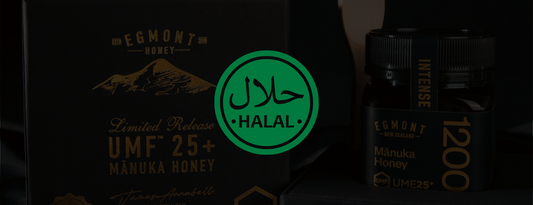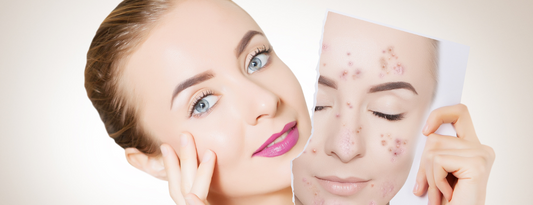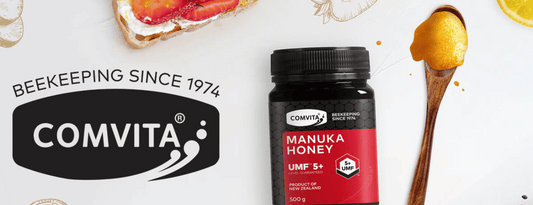Manuka Honey Wounds: A Comprehensive Review of Research Findings
Manuka honey has emerged as a powerful natural remedy in wound care, garnering significant attention from medical professionals and researchers alike. This article delves into the scientific evidence supporting the use of Manuka honey for wound treatment, exploring its unique properties and effectiveness in promoting healing.
Manuka Honey on Wounds - Table of Contents
The Science Behind Manuka Honey and Wounds
Manuka honey, primarily produced in New Zealand, possesses exceptional antibacterial properties that make it particularly effective in treating wounds[1][2]. The efficacy of Manuka honey in wound care is attributed to its high concentration of methylglyoxal (MGO), which is responsible for its Unique Manuka Factor (UMF)[3].
Best Sellers on Manuka Hut
Antibacterial Properties
Research has consistently demonstrated the potent antibacterial activity of Manuka honey against a wide range of pathogens commonly found in wounds[1;1][4]. Studies have shown that Manuka honey is effective against both planktonic bacteria and biofilms, including antibiotic-resistant strains such as Methicillin-resistant Staphylococcus aureus (MRSA) and vancomycin-resistant enterococci (VRE)[3;1].
In a study comparing Manuka honey to hydrogel dressings, 70% of MRSA-infected wounds treated with Manuka honey showed complete eradication of the bacteria, compared to only 17% in the hydrogel group[3;2]. This highlights the superior antibacterial efficacy of Manuka honey in managing infected wounds.
Wound Healing Promotion
Manuka honey wounds benefit from multiple mechanisms that enhance the healing process:
- Rapid Debridement: Manuka honey facilitates the removal of dead tissue and slough, which can impede healing and harbour bacteria[1:2][2:1].
- Anti-inflammatory Effects: It suppresses prolonged inflammatory responses while stimulating the production of pro-inflammatory cytokines, allowing for normal healing processes[1;3].
- Tissue Regeneration: Manuka honey promotes the growth of tissues for wound repair, enhancing granulation tissue formation, angiogenesis, and re-epithelialisation[1:4][2:2].

Clinical Evidence for Manuka Honey Wounds
A clinical study conducted on 15 patients with chronic non-healing discharging extra-oral wounds provided compelling evidence for the efficacy of Manuka honey in wound care[1:5]. The study found that Manuka honey dressings, used in conjunction with antibiotic treatment, led to complete cessation of pus discharge within the first week of application. Over four weeks, the average wound depth decreased significantly, with complete wound epithelialisation observed[1:6].
Another study focusing on horse wounds demonstrated that Manuka honey with a higher UMF rating (UMF 20) resulted in faster healing compared to UMF 5 honey and generic honey[5]. This suggests that the concentration of active compounds in Manuka honey plays a crucial role in its wound-healing properties.
Our Top Brand: Manuka Health
Unique Manuka Factor (UMF) and Its Importance
The UMF rating of Manuka honey is a critical factor in its effectiveness for wound treatment. Research has shown that higher UMF ratings correlate with increased antibacterial activity and wound-healing potential[5:1]. When selecting Manuka honey for wound care, it is essential to choose products with appropriate UMF ratings to ensure optimal results.
Manuka Honey Wounds: Comparison with Other Treatments
Studies have compared the efficacy of Manuka honey to other wound treatments, including silver-based dressings and conventional antibiotics. Manuka honey has shown comparable or superior results in many cases, with the added benefits of no known bacterial resistance and low cytotoxicity[3:3][6].
Advantages of Manuka Honey in Wound Care
- Broad-spectrum antimicrobial activity: Effective against a wide range of bacteria, including antibiotic-resistant strains[3:4][4:1].
- No known bacterial resistance: Unlike antibiotics, bacteria have not developed resistance to Manuka honey[3:5][6:1].
- Low cytotoxicity: Manuka honey does not harm healthy tissue, making it safe for prolonged use[3:6][6:2].
- Autolytic debridement: Promotes the removal of dead tissue and slough from the wound bed[1][2:3].
- Odour neutralisation: Helps reduce unpleasant odours associated with infected wounds[3].

Enjoyed this article on "How to use Manuka honey?" Here are some other articles you might like:
Popular on Manuka Hut
Safety and Cost-effectiveness
Manuka honey is generally considered safe and cost-effective for wound treatment. It has shown particular promise in managing complicated diabetic wounds that are resistant to antibiotics and at risk of amputation[1:1:2]. The use of Manuka honey has been associated with reduced pain, inflammation, and debridement time, as well as improved patient quality of life[1:1:3][2:4].
Future Directions in Manuka Honey Wounds Research
While the current evidence supporting the use of Manuka honey in wound care is promising, further research is needed to fully understand its mechanisms of action and optimise its use in clinical practice. Future studies should focus on:
- Determining the optimal UMF ratings for different types of wounds.
- Investigating the long-term effects of Manuka honey on wound healing and scar formation.
- Exploring potential synergistic effects when combining Manuka honey with other wound care treatments.
- Conducting large-scale clinical trials to establish standardised protocols for manuka honey wound treatment.
Conclusion
The scientific evidence supporting the use of Manuka honey in wound care is compelling. Its unique antibacterial properties, combined with its ability to promote tissue regeneration and facilitate debridement, make it a valuable tool in modern wound management. As research continues to uncover the full potential of Manuka honey wounds treatment, it is likely to play an increasingly important role in both acute and chronic wound care.
If you’re looking to explore more about Manuka honey, check out these resources:
Manuka Honey on Wounds - References
References:
Manuka Honey: why this multi action antimicrobial is a valid alternative to silver
URL: https://wounds-uk.com/journal-articles/manuka-honey-why-multi-action-antimicrobial-valid-alternative-silver/
Author: Ginny Deane
Published in: Wounds UK, Volume 16, Issue 4, November 2020Medical-grade honey has superior antibacterial properties against common bacterial isolates in wound cultures of dogs and cats in comparison to non–medical-grade honey types
URL: https://avmajournals.avma.org/view/journals/ajvr/85/12/ajvr.24.07.0188.xml
Authors: Roxanna Neo, Pankaj Gaonkar, Laura Huber, Katelyn C. Hlusko
Published in: American Journal of Veterinary Research, Volume 85, Issue 12, December 2024Honey with high Unique Manuka Factor heals wounds
URL: https://www.sydney.edu.au/news-opinion/news/2017/09/05/honey-with-high-unique-manuka-factor-heals-contaminated-horse-wo.html
Author: Professor Andrew Dart
Published by: The University of Sydney, September 5, 2017Manuka honey: A promising wound dressing material for the chronic nonhealing discharging wounds: A retrospective study
URL: https://pmc.ncbi.nlm.nih.gov/articles/PMC8386265/
Authors: Nupur Kapoor, Rahul Yadav
Published in: National Journal of Maxillofacial Surgery, 2021Chronic wound management; surgical therapy and complementary nursing with Manuka honey
URL: https://scholar.valpo.edu/cgi/viewcontent.cgi?article=1387&context=jmms
Authors: Georgeta Paunică-Panea, Sergiu Teodorescu, Aurelia Preda, Laura Elena Gligor, Adrian Silaghi, Vlad Denis Constantin
Published in: Journal of Mind and Medical Sciences, 2021Manuka Honey: why this multi action antimicrobial is a valid alternative to silver (PDF version)
URL: https://wounds-uk.com/wp-content/uploads/2023/02/a466512da6cc6dfc9a00585c4a58b5e9.pdf
Author: Ginny Deane
Published in: Wounds UK, Volume 16, Issue 4, November 2020
Frequently Asked Questions
What makes manuka honey effective for wound treatment?
Manuka honey wounds benefit from its high concentration of methylglyoxal (MGO), which gives it potent antibacterial properties and promotes wound healing.
Can manuka honey be used on all types of wounds?
While manuka honey is effective for many types of wounds, it's essential to consult a healthcare professional before using it, especially for manuka honey wounds treatment in severe or chronic cases.
Is there a difference between regular honey and manuka honey for wound care?
Yes, manuka honey has significantly higher antibacterial properties compared to regular honey, making it more effective for manuka honey wounds treatment.





